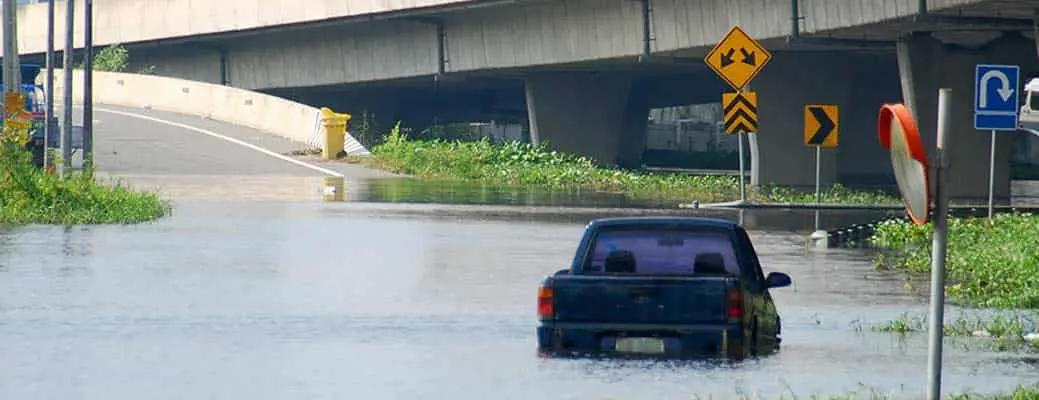What Do You Do if Your Car Has Flood Damage?


Flooding leads to significant damage to property, including vehicles. Not only can your vehicle be impacted by flooding in your area, but also by driving through a deep puddle, leaving a window open during a storm or having a damaged seal. When your vehicle is flooded, here’s what you should do.
The first thing to do is remove your car from the flooded area. Call a tow truck to remove your car from its location if it’s still flooded. Bail out any standing water to prevent further damage.
Take note of how deep the water was so you can determine the severity of the potential damage. If it was below the bottom of your doors, your car likely didn’t sustain much damage. If anything beyond the tires was touched by floodwater, you should do a more in-depth inspection. If that’s the case, do not start your car until it has been dried out and looked at — if there is water in the engine, you could cause significant additional damage.
Even if you’re not familiar with your vehicle’s engine, you can evaluate the damage inflicted by the flood by getting under the hood. Start by disconnecting the battery so you can safely poke around.
First, check the oil dipstick for water droplets. If you see some, that means water may have gotten in your engine and you will need to call a mechanic for repairs. Your cylinders — which were built to handle air — may be damaged by the water. Do not start your car — if water is in your engine, turning the key will cause the cylinders to break.
Be ready to drain oil, transmission fluid and lube if they were impacted by the water. You may have to do this before your car can be towed. Siphon some gas from your tank; if there is water in the tank, it will naturally separate from the fuel. In that case, you will need to drain the tank completely.
Check your brakes, power steering, coolant and clutch for visible damage. You should have a professional look at your vehicle’s moving parts.
Check the electronics in the car — like your headlights, power locks, turn signals, power windows and seats, interior lights, air conditioning and radio — to ensure they are working properly.
Get the interior dry as quickly as you can to prevent mold. You can use a wet/dry vacuum to address standing water and towels to absorb water that has soaked into the vehicle’s seats or upholstery. Open up the vehicle as best as possible to air it out and bring anything you can outside. You may want to remove seats from their tracks to prevent rust. Fans and dehumidifiers can help speed up the drying process.
Take stock of any interior components that were immersed, as those will likely need to be replaced to avoid mold issues. This includes floor mats, door panels and carpeting. You can use baking soda to help deodorize anything that you are able to keep.
A flood-damaged car can be a considerable issue. Your agent will be able to help you determine the impact and the best way to move forward. You should be prepared to provide as much information as you can to your agent about the condition of your vehicle.
Repairing a flood-damaged car could be simple and cheap — like spending $25 removing some water spots and giving the exterior a deep clean — or it could be complicated and expensive — like spending $8,000 repairing a hydrolocked engine.
A Farm Bureau agent can help ensure that you and your vehicle have the right coverage in place so that if ever your car is flooded, you can feel confident knowing that you are protected.